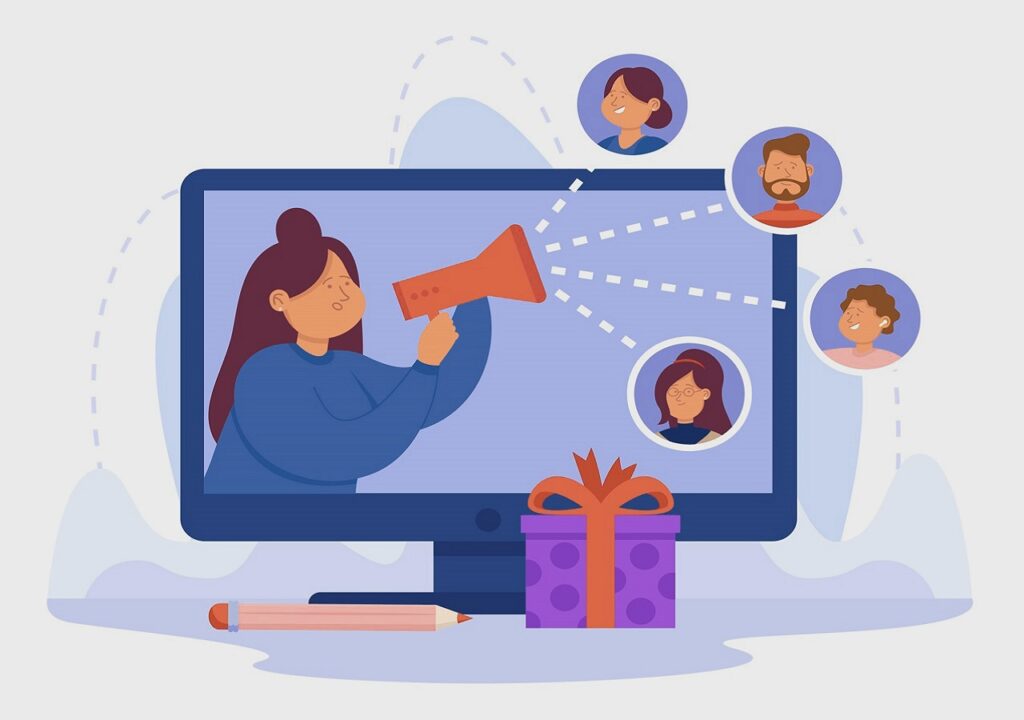On-page SEO refers to the process of optimizing individual web pages in order to rank higher and earn more relevant traffic in search engines. This includes optimizing the content and HTML source code of the page, as well as ensuring that the page is free of any technical issues that could hinder its ability to be indexed by search engines.
On-page SEO is an important part of any overall search engine optimization strategy, as it helps search engines understand the topic and relevance of a page, and can help improve the visibility of any website in SERPs.
Some common on-page SEO techniques include optimizing title tags and meta descriptions, using header tags, and creating high-quality, keyword-rich content that is relevant to the topic of the page.
Why On Page SEO Is Important?
On-page SEO is important because it helps search engines understand the content of your website and determine its relevance to search queries. By optimizing your web pages, you can improve your website’s ranking in search engine results pages and attract more relevant traffic to your site.
This, in turn, can help to improve the user experience on your website and increase the chances of converting visitors into customers.
Additionally, on-page SEO can help to improve the technical performance of your website, which can make it faster and easier to use, and can also help to improve its accessibility to users with disabilities.
Overall, on-page SEO is an essential part of any effective search engine optimization strategy.
On-Page SEO Elements
Some common on-page SEO elements include:
- Page Titles: The page title is the text that appears in the title bar of a web browser, and it is also used as the main heading for the page in search engine results pages. Optimizing the page title can help to improve the relevance and keyword targeting of the page.
- Meta Descriptions: The meta description is a brief summary of the page’s content that appears in search engine results pages. Optimizing the meta description can help to improve the click-through rate of the page by providing users with a clear and compelling reason to visit the page.
- Headings and Subheadings: Headings and subheadings are used to organize the content on a page and make it easier for users to scan and understand. Using relevant and descriptive headings can also help to improve the relevance and keyword targeting of the page.
- Images and Videos: Including high-quality images and videos on your web pages can make them more engaging and interesting to users. Optimizing the file names and alt text of images and videos can also help to improve the relevance and keyword targeting of the page.
- Internal and External links: Links to other pages on your website (internal links) and to other websites (external links) can help to improve the relevance and authority of your page. Using relevant and descriptive anchor text for links can also help to improve the keyword targeting of the page.
- URL’s: Optimize the page’s URL to make it concise, descriptive, and easy to read.
- Responsiveness: Use responsive design to ensure that the page is mobile-friendly and can be easily accessed and viewed on all devices.
- Fix Issue: Check for and fix any technical errors or issues on the page, such as broken links, duplicate content, or slow page loading speed.
- Testing: Test the page to ensure that it is easy to use and navigate, and that it provides a positive user experience.
all-in-all, optimizing these and other on-page SEO elements can help to improve the ranking and performance of your website in search engine results pages.
How On Page Helps To Improve Website Ranking?
On-page SEO helps to improve website ranking by making your website more relevant, authoritative, and user-friendly to both search engines and users.
By optimizing the content and HTML source code of your web pages, you can make your website more easily indexed and understood by search engine algorithms. This can help to improve your website’s ranking in search engine results pages for relevant keywords and search queries.
Also, on-page SEO can help to improve the user experience on your website, which can increase the amount of time that visitors spend on your site and decrease the bounce rate.
Both of these factors can signal to search engines that your website is valuable and relevant, which can help to improve your ranking.
Benefits of On Page Optimization
Some benefits of on-page SEO include:
- Improved Visibility In Search Engines: By optimizing your website’s individual pages, you can improve your visibility in search engine results pages (SERPs) and attract more organic traffic to your site. This can lead to increased brand awareness and more potential customers for your business.
- Increased User Engagement: By providing high-quality, relevant content on your website, you can improve the user experience for your visitors. This can lead to increased engagement, such as more time spent on your site, more pages visited, and more repeat visits.
- Better User Experience: On-page SEO can help to improve the user experience on your website by making it faster, easier to navigate, and more accessible to users with disabilities. This can help to increase the amount of time that visitors spend on your site and decrease the bounce rate, which can improve your website’s ranking in search engine results pages.
- Increased Brand Awareness: By ranking higher in search engine results pages, your website will be more visible to potential customers, which can help to increase your brand’s exposure and recognition. This can help to drive more traffic to your website and improve the chances of converting visitors into customers.
- Increased Revenue: By improving your website’s ranking in search engine results pages and attracting more relevant traffic, on-page SEO can help to increase your website’s revenue by driving more sales or leads. This can help to improve the overall performance and profitability of your business.
- Increased Conversion Rates: By providing a better user experience and attracting more relevant traffic to your site, on-page SEO can lead to increased conversion rates. This means that more of your visitors will take the desired action, whether it’s making a purchase, signing up for a newsletter, or filling out a contact form.
- Competitive Advantage: By implementing on-page SEO on your website, you can gain a competitive advantage over other websites that are not optimized for search engines. This can help you attract more organic traffic and potential customers, which can ultimately lead to increased revenue for your business.
Overall, on-page SEO can help to improve the visibility and performance of your website in search engine results pages, which can have a range of beneficial effects for your business.
Some Common On-Page Optimizatio Techniques
Some common on-page SEO techniques include optimizing title tags and meta descriptions, using header tags, and creating high-quality, keyword-rich content that is relevant to the topic of the page.
Other techniques include:
- Using internal linking to help search engines understand the structure and hierarchy of a website.
- Ensuring that the website’s URLs are descriptive and keyword-rich.
- Using alt text to describe images, which can help search engines understand the content of the images on a page.
- Ensuring that the website is mobile-friendly and has a fast loading speed, as these factors can affect its ranking in search engine results.
- Using social media to promote your website and its content, which can help drive traffic to your website and improve its search engine visibility.
In general, the goal of SEO is to make it easy for search engines to understand the content and relevance of a page, and to help improve the visibility of a website in search engine results pages.
On Page SEO Step by Step Guide to Rank Website in Search Engine
Search engine optimization (know as SEO) is the process of improving the visibility of your website in search engine’s results. This is often referred to as “organic” or “natural” results. The higher a website or web page ranks in the search engine’s results, the more likely it is that the site will be visited by users.
Here are the steps for optimizing a website or web page for search engines:
- Research Keywords: Start by researching the keywords and phrases that your target audience is using to search for the types of products or services that you offer. You can use different types of keyword research tool to help you identify the best keywords to target.
- Create Valuable, High-Quality Content: Once you have a list of keywords, you can use them to create valuable, high-quality content that is relevant to your audience. This content should be informative, useful, and engaging. Videos are a powerful medium to capture attention and convey information effectively. Incorporating a video maker tool can significantly enhance your content creation process. Using videos in your website not only engages your audience but also boosts your website ranking by increasing user time on site and reducing bounce rates.
- Optimize Your Website’s Meta Tags And Title Tags: Meta tags and title tags are HTML elements that provide information about your website to search engines. These tags should include your keywords and provide a concise, accurate description of your website.
- Make Sure Your Website Is Mobile-Friendly: More and more people are using mobile devices to access the internet, so it’s important that your website is mobile-friendly. This means that it should be easy to navigate and read on a mobile device.
- Sitemap: Create an XML sitemap that lists all of the pages on your website. This will help search engines index your pages more efficiently.
- Build High-Quality Backlinks: Creating backlinks to your website help improve visibility and search engine ranking. To build high-quality backlinks, you can reach out to other websites and ask them to link to your site, or you can create valuable content that other websites will want to link to.
- Relevant Directories: Submit your website to relevant directories and search engines. This will help search engines discover your website and improve its visibility in search results.
- Monitor Your Progress And Adjust Your Strategy: Once you have implemented these steps, you should monitor your website’s performance to see how it is doing in the search engine results. You can use tools like Google Analytics to track your website’s traffic and see which keywords are driving the most traffic to your site. If you find that your website is not ranking well for certain keywords, you can adjust your strategy and try different techniques to improve your ranking.
To sum up, SEO is a continuous process that requires effort and attention to detail. By following these steps and staying up-to-date with the latest SEO trends, you can improve your website’s visibility and attract more visitors from search engines.
Conclusion
In conclusion, on-page SEO is the practice of optimizing individual web pages on your website in order to rank higher and earn more relevant traffic in search engines. By implementing on-page SEO, you can improve your website’s visibility, user experience, and conversion rates, which can ultimately lead to increased revenue for your business.
To optimize your website’s individual pages for search engines, you can research keywords, create valuable, high-quality content, optimize your website’s meta tags and title tags, make sure your website is mobile-friendly, build high-quality backlinks, and monitor your progress and adjust your strategy. By following these steps and staying up-to-date with the latest SEO trends, you can improve your website’s ranking and attract more organic traffic from search engines.




